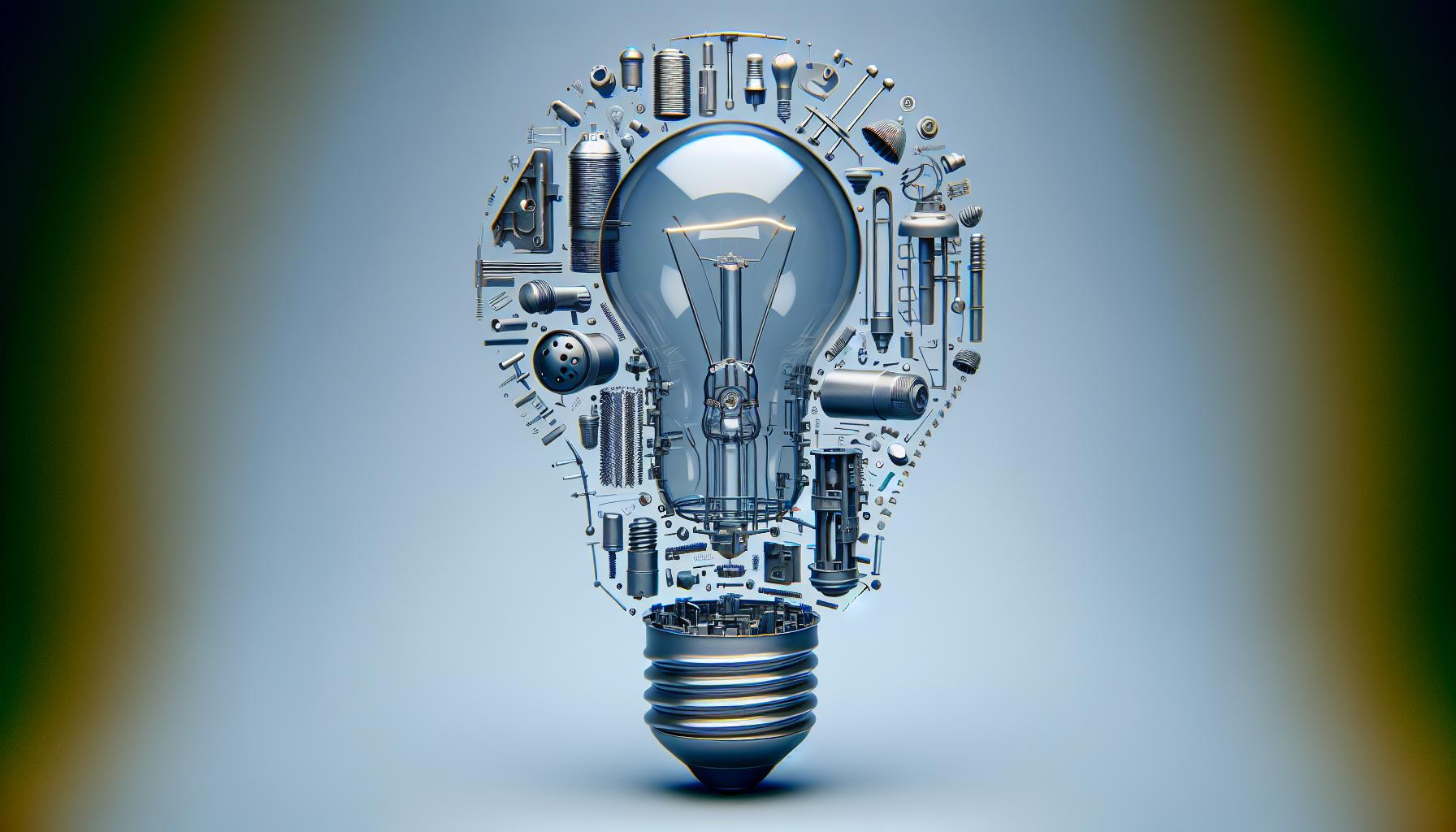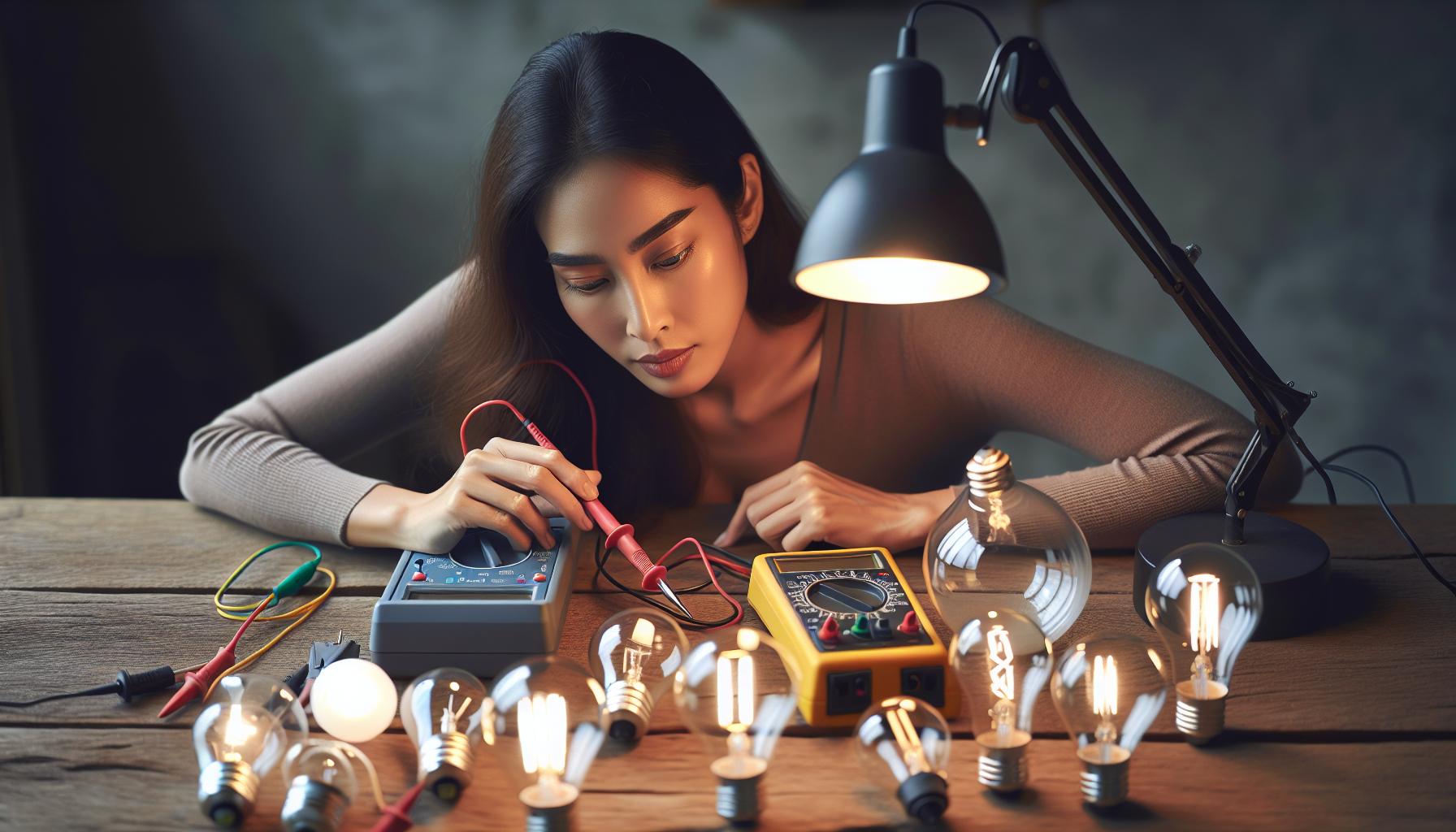Ever find yourself flipping the switch only to be met with darkness? You’re not alone. Light bulbs are a staple in every household, but sometimes they just don’t work. It’s frustrating when you’re left in the dim, especially if you’ve just replaced the bulb.

But what’s really going on when some bulbs shine bright while others fizzle out? It’s not just a matter of luck. There are actual reasons behind this everyday mystery that you’ve probably never considered. Let’s shed some light on the subject and find out why some bulbs are up for the task, while others leave you in the shadows.
The Importance of a Working Light Bulb
Imagine you’ve planned out an entire Saturday dedicated to your latest home DIY project. You’re all set to get started, only to find that the light in your workspace won’t turn on. Nothing saps motivation quite like a sudden plunge into the dark. It’s not just about convenience; a working light bulb is crucial for several reasons.
First off, lighting affects productivity. Studies have shown that adequate lighting improves focus and make tasks feel less daunting. That bulb illuminates more than your room; it brightens your mood and helps you stay on task. Now, whether it’s sanding down an old dresser or repainting the living room, proper lighting is key to getting those details right and avoiding mistakes.
Then there’s the matter of safety. During your projects, you’re often handling tools and materials that require precise handling. A flickering or dead bulb can lead to unnecessary accidents. Good lighting is a safety feature, especially in areas like the workshop or garage where you’ve probably got saws, drills, and nails lying around.
Efficiency is another factor. A light bulb that doesn’t work properly may actually be burning through electricity without providing any benefits. This means higher utility bills for a whole lot of nothing. Plus, in today’s eco-conscious world, it’s important to make sure you’re not wasting resources. LEDs, for example, have come a long way in terms of energy efficiency and lifespan, so opting for quality, efficient bulbs can have a notable impact on energy consumption and costs.
So, next time you’re faced with a light bulb that’s not performing up to par, it’s worth considering these points. You’ll not only save on costs and contribute to a safer work environment but also maintain the flow of your DIY endeavors. Keep your spaces lit properly and you’ll be amazed at how much more you can achieve.
Understanding the Components of a Light Bulb

When you’re in the midst of a DIY project, understanding your tools is half the battle. A light bulb might seem simple, but it’s actually a delicate balance of components that allow it to function properly.
At the heart of most light bulbs is the filament, a thin wire that glows when electricity passes through it. The material and thickness of the filament determine its lifespan and efficiency. Tungsten, a popular filament material, has a high melting point and can withstand repeated heating and cooling cycles.
Surrounding the filament is the bulb envelope, usually made from glass or quartz, which protects the filament and helps control the spread of light. The inert gas within the bulb, often argon or nitrogen, is crucial as well. It slows down the degradation of the filament by preventing oxidation.
Then there’s the base of the bulb, which connects to your light fixture, ensuring a reliable electrical contact. It’s here where issues can often arise. If the base is defective or improperly screwed in, you might find your bulb flickering or not working at all.
To dive deeper into how these components interact:
- The Filament: Tungsten heats up and emits light; the thinner the filament, the higher the resistance and brightness.
- The Bulb Envelope: Keeps oxygen away from the filament; also aids in directing light efficiently.
- The Inert Gas: Reduces filament wear and helps maintain efficiency.
- The Base: Facilitates electrical connection; must be correctly fitted to ensure functionality.
Each part plays a vital role in your light bulb’s performance. It’s a symphony of science and design that, when conducted properly, lights up your workspace—enabling you to work safer, better, and smarter. With a little knowledge of what goes into that bulb above your head, you’re better equipped to troubleshoot when something goes wrong. After all, properly illuminating your space isn’t just about comfort; it’s about maximizing your ability to create and repair with precision.
Factors Influencing Light Bulb Performance

« Why Do Some Light Bulbs Stop Working? Uncover Their Lifespan Secrets
Does Light Bulbs Expire? Uncover Their True Lifespan & Care Tips »
When you’re faced with a light bulb that isn’t working, it’s time to consider the various factors that can affect its performance. Not all bulbs are created equal, and understanding what influences their functionality is key to keeping your home aglow with a warm, welcoming light.
Quality of Manufacturing
First off, the quality of manufacturing plays a significant role. A well-made bulb should have a consistent and durable filament, free of any imperfections that could shorten its life. When you’re out shopping, aim for reputable brands that are known for their high standards; they might cost a bit more, but they last longer.
Power Supply Variations
Next up is your power supply. Bulbs require a specific voltage to operate correctly, and variations in your home’s electrical system can impact that. Fluctuations and surges can cause bulbs to burn out prematurely. A good surge protector can help stabilize the power your light bulbs receive.
Usage Frequency and Duration
Consider how often and how long you’re using your bulbs too:
- Frequent on and off cycles can stress the filament.
- Long periods of use generate heat, potentially shortening the bulb’s lifespan.
Environmental Factors
And don’t forget about environmental factors. Moisture, temperature changes, and even how you screw in the bulb can affect its performance. Outdoor bulbs especially need to be resilient against weather conditions, so make sure you’re picking ones that are designed for outdoor use if that’s where they’re going to be.
Compatibility and Usage
Lastly, ensure that the bulb is suitable for the intended usage. A dimmable bulb, for example, requires a compatible dimmer switch. Using the wrong switch can lead to malfunctions. Match your bulb to your fixture and intended use for the best performance.
By paying attention to these aspects, you’ll be much better equipped to pick the right bulb for every situation and get the most out of each one. Remember, the longevity and efficiency of your light bulbs largely depend on these factors, so take the time to consider them carefully. Keep improving your DIY lighting projects with this newfound knowledge, and light up your space just the way you like it.
The Role of Power Supply in Bulb Functionality

You might not immediately consider the intricacies of the power supply when you screw a bulb into a socket, but it plays a crucial role in how well that bulb will perform. Consistent voltage is key to both the lifespan and efficiency of your light bulbs. When the voltage is too low or too high, it can cause a variety of problems.
For example, if you’ve had bulbs burn out sooner than expected, a fluctuating voltage could be the culprit. This inconsistency can stem from outdated wiring, poor connections, or issues within your local power grid. Undervoltage results in dimmer lighting, slowly degrading the filament over time due to insufficient energy, while overvoltage can cause an abrupt burnout.
Here’s a simple breakdown of how these voltage variations can affect bulb performance:
- Undervoltage: Lower light output and potential for long-term filament degradation.
- Overvoltage: Increased brightness, yet drastically reduced lifespan.
It’s not just about the voltage, though; the type of power supply matters, too. LED bulbs, for instance, rely on drivers that convert your home’s AC power to the DC power they need. If the driver is faulty or of low-quality, even the best LED bulb won’t perform as it should.
Consider power surge protectors as they can safeguard against spikes that would otherwise damage delicate bulb components. Think of the common scenario when a storm hits and the lights flicker – a surge protector intercepts those spikes, keeping your bulbs brighter, longer.
Don’t overlook the compatibility of your light bulbs with dimmer switches. Not all bulbs are designed to work with the variable power supply that dimmers provide. Without compatibility, you could experience flickering, reduced bulb life, or even non-functioning bulbs.
When embarking on your next DIY lighting project, keep in mind that selecting the right bulb includes understanding the power it will draw from. Whether you’re installing soft lighting for a cozy reading nook or bright lights for your workshop, matching the bulb to your power supply is essential for optimal functionality.
Identifying and Troubleshooting Common Light Bulb Issues

When you’re faced with a light bulb that’s not working, it’s easy to assume it’s simply burned out. But don’t rush to that conclusion without a bit of troubleshooting. With your love for home DIY projects, you’ve got this under control.
First, check the bulb itself. Is it screwed in properly? Sometimes a bulb that’s not seated correctly in the socket won’t work. Give it a gentle twist to make sure it’s snug. If the bulb is visibly damaged or the filament is broken, it’s time for a new one.
Next, examine the power supply. You already know the importance of a consistent voltage. If the bulb flickers or doesn’t turn on at all, test other devices in the same socket or check your circuit breaker. It could be a bigger issue than just the bulb if nothing works.
Switching gears to the fixture, inspect the lamp or fixture switch. A faulty switch can be deceptive, but you’re savvy enough to figure it out. A simple way to test if the switch is the problem is by plugging in a lamp you know works. No success? The switch might be your culprit.
Dimmer switches can be tricky. Remember, not all bulbs are compatible with all dimmers. If you’ve got an LED bulb that’s acting up, it’s worth checking if the dimmer switch is meant for LEDs.
Don’t forget the age-old advice: unplug it, then plug it back in. This can work wonders, especially with lighting fixtures that have built-in electronics or smart bulbs. It resets the system, and sometimes, that’s all it takes.
To prevent future issues, consider these proactive steps:
- Use power surge protectors to thwart voltage spikes.
- Ensure bulbs are compatible with your fixtures and switches.
- Replace bulbs with quality options from reputable brands.
Remember, proper maintenance and a bit of troubleshooting can go a long way in keeping your lights on and your projects illuminated.
Conclusion
You’ve got the know-how to tackle those pesky light bulb issues now. Remember, it’s often the simplest solutions that solve the problem—like making sure your bulb is snug in its socket or that your power supply hasn’t tripped up. If your bulbs are still giving you the cold shoulder, don’t forget to consider the role of switches and dimmers or give a quick reboot to those smart fixtures. With these tips up your sleeve, you’ll keep your space bright and welcoming, just the way you like it. Keep shining!
Frequently Asked Questions
What are the first steps to troubleshoot a light bulb issue?
Check if the bulb is screwed in properly and not damaged. If the issue persists, test the power supply by trying other devices in the same socket.
What should I do if my light bulb flickers or doesn’t turn on?
Investigate the power source by checking the circuit breaker and socket. If this doesn’t resolve it, the problem may be with the light switch or an incompatible dimmer.
How can a faulty switch affect my light bulb?
A faulty switch can interrupt the electrical flow, causing the light bulb to flicker or not turn on at all.
What could be wrong if my smart bulb is not working properly?
If a smart bulb is not functioning as expected, try unplugging and plugging back in the fixture. Ensure the bulb is compatible with your home automation system.
Can a dimmer switch be the problem with my light bulb’s performance?
Yes, an incompatible or faulty dimmer switch can result in flickering or insufficient power supply to the bulb, causing issues with its performance.




